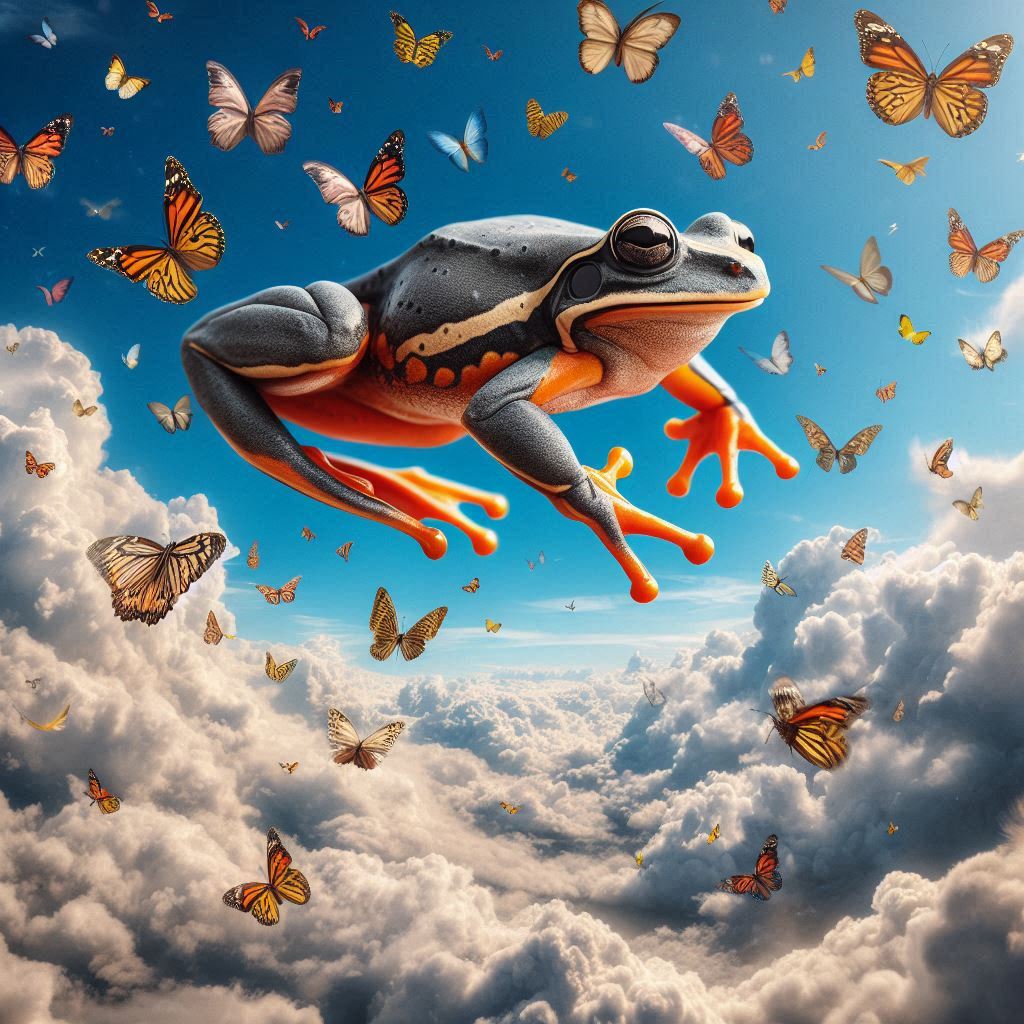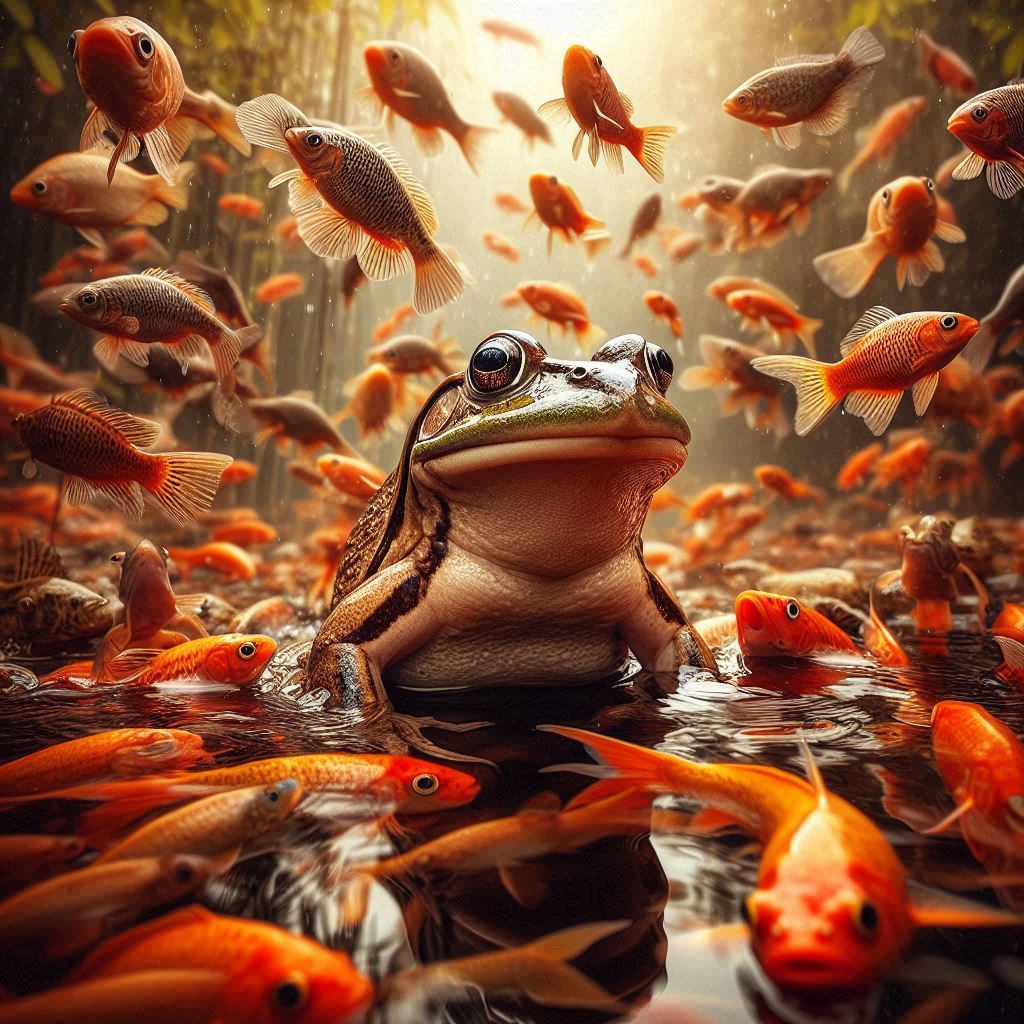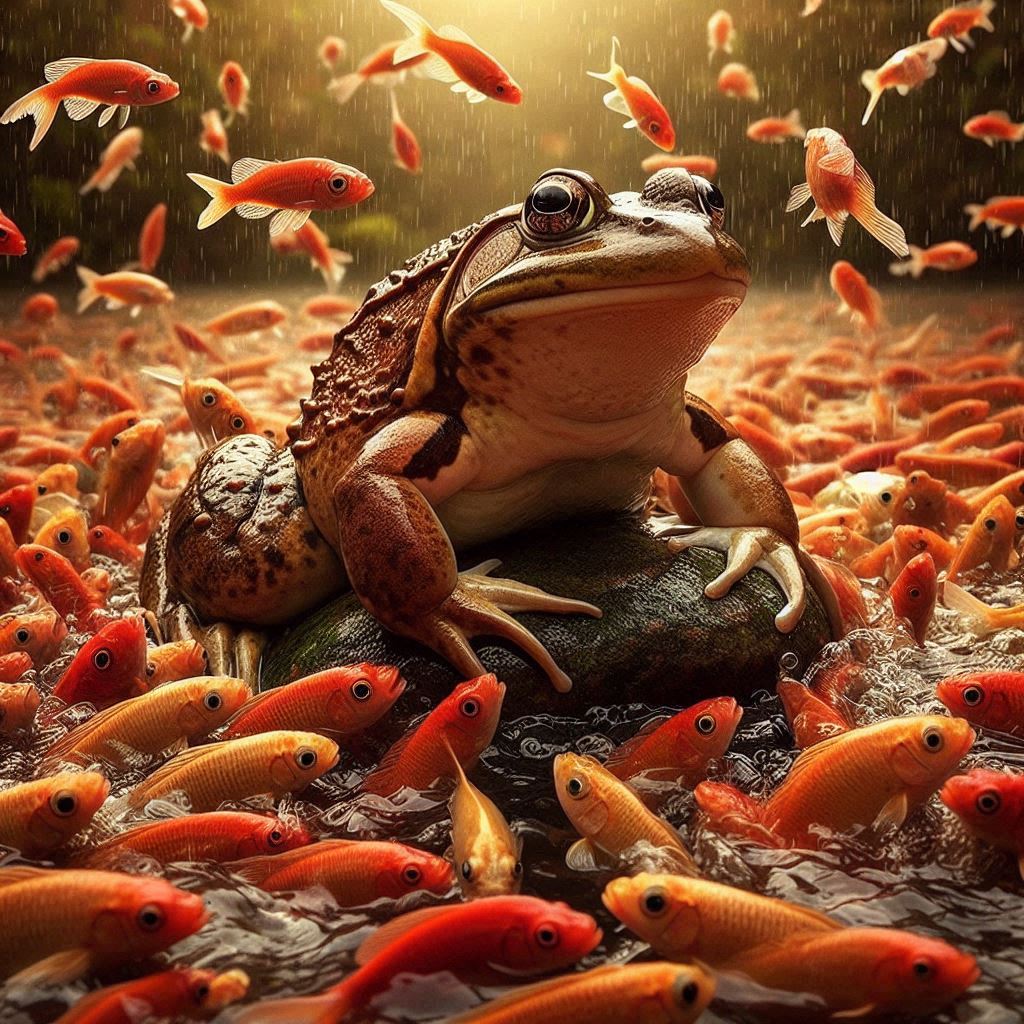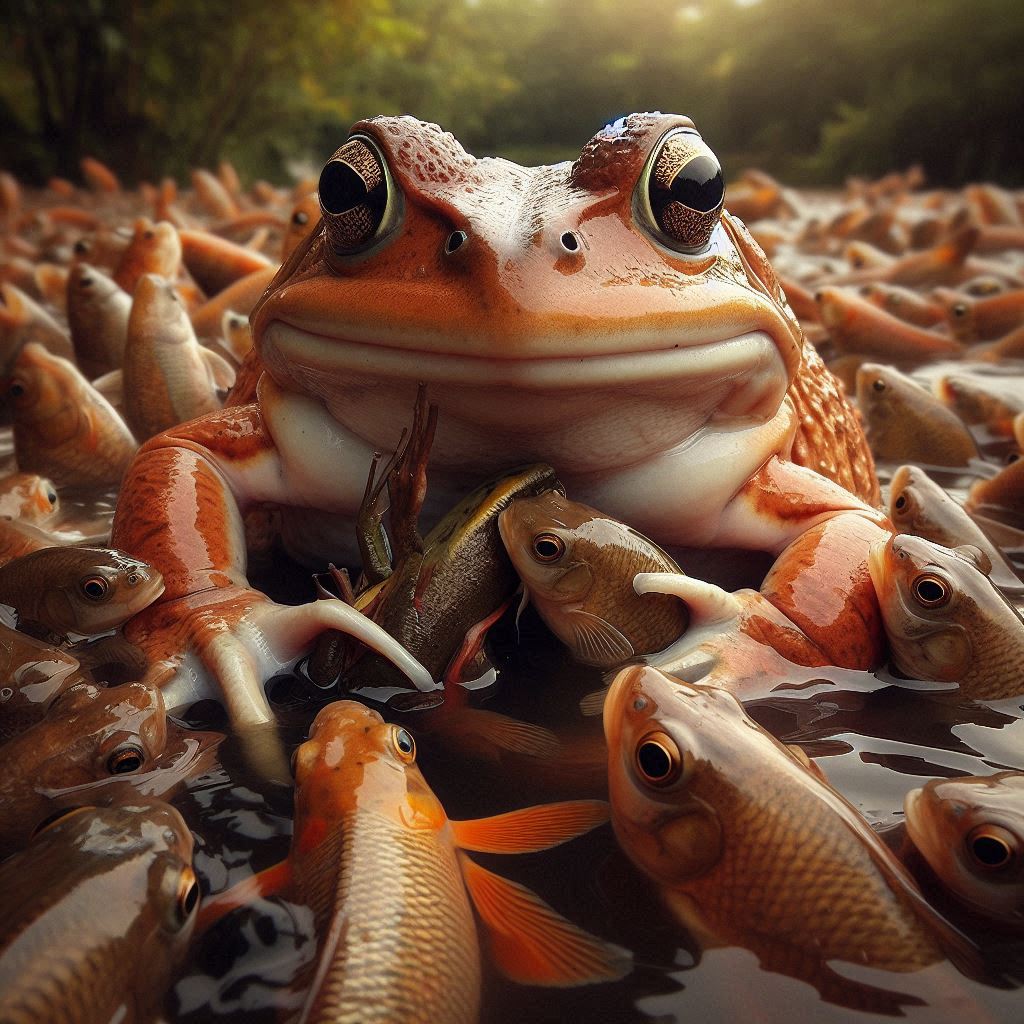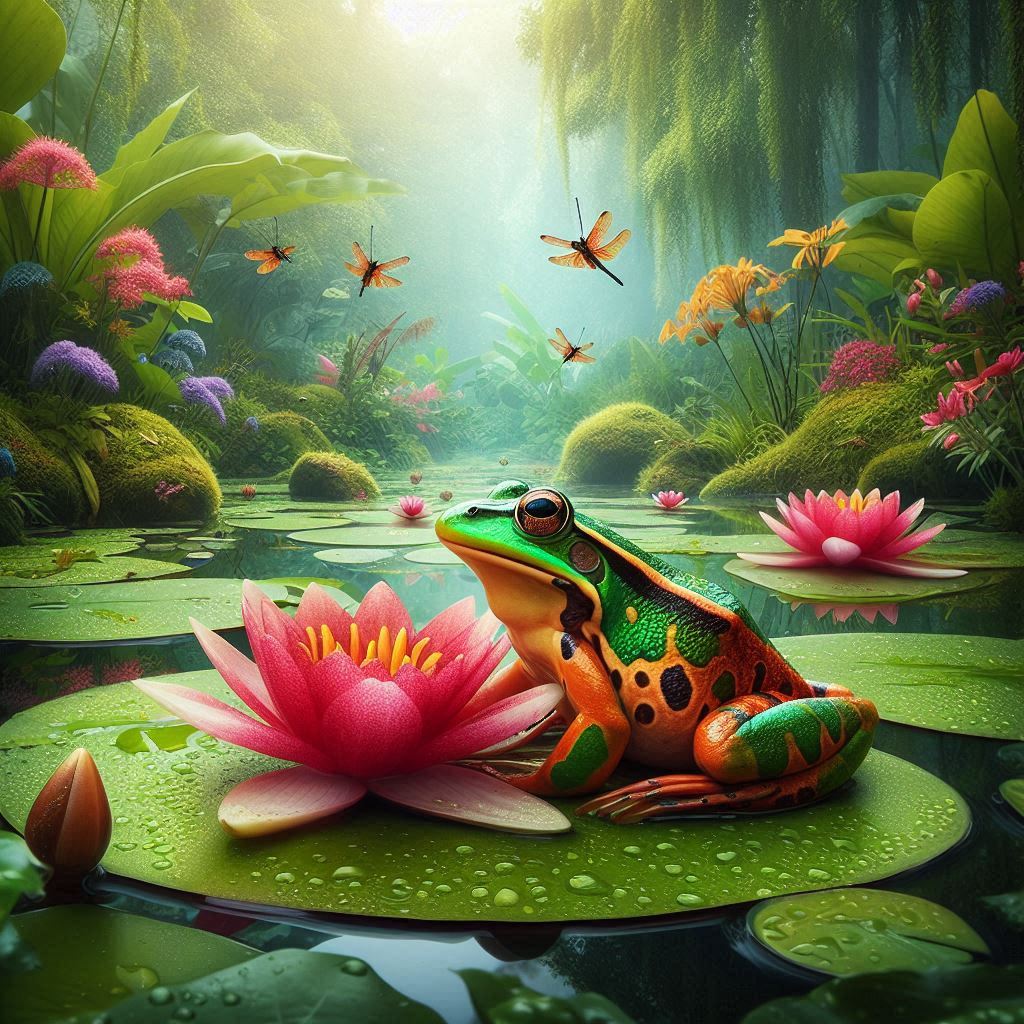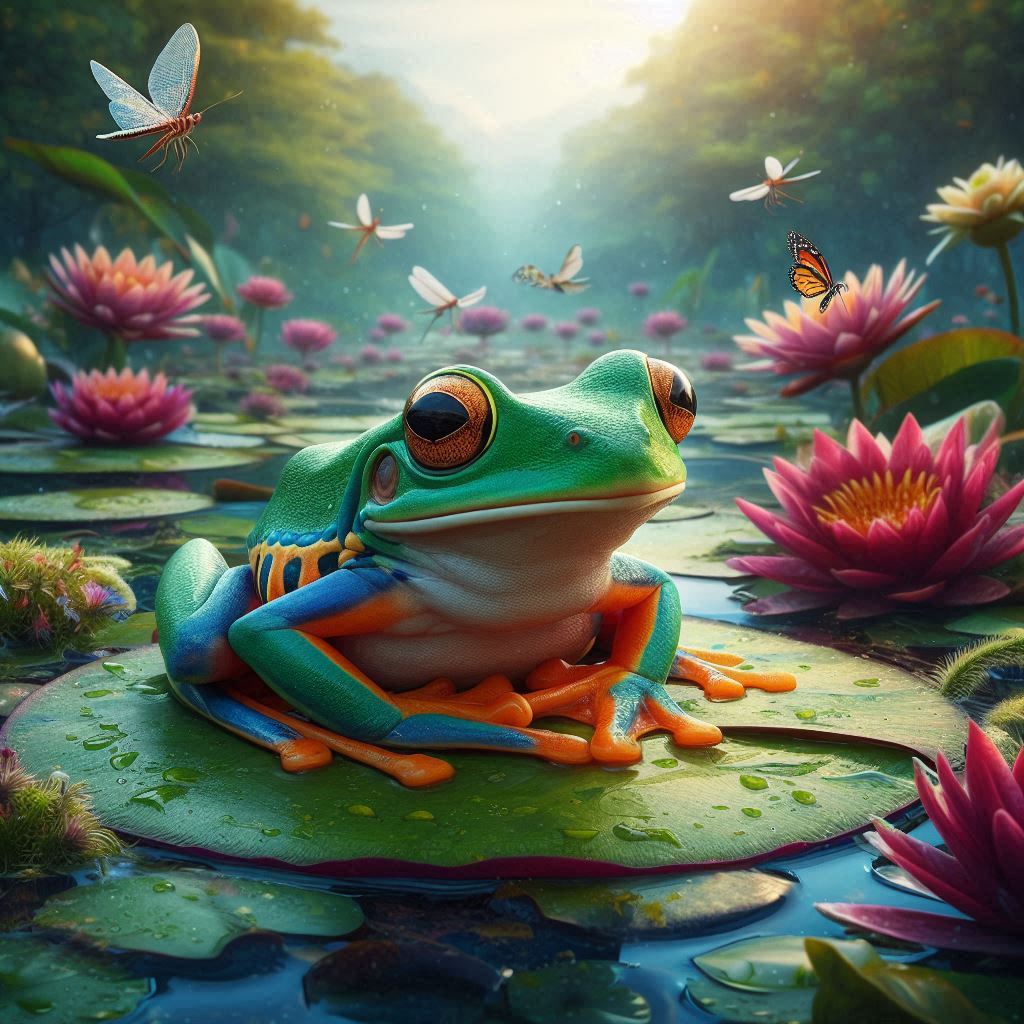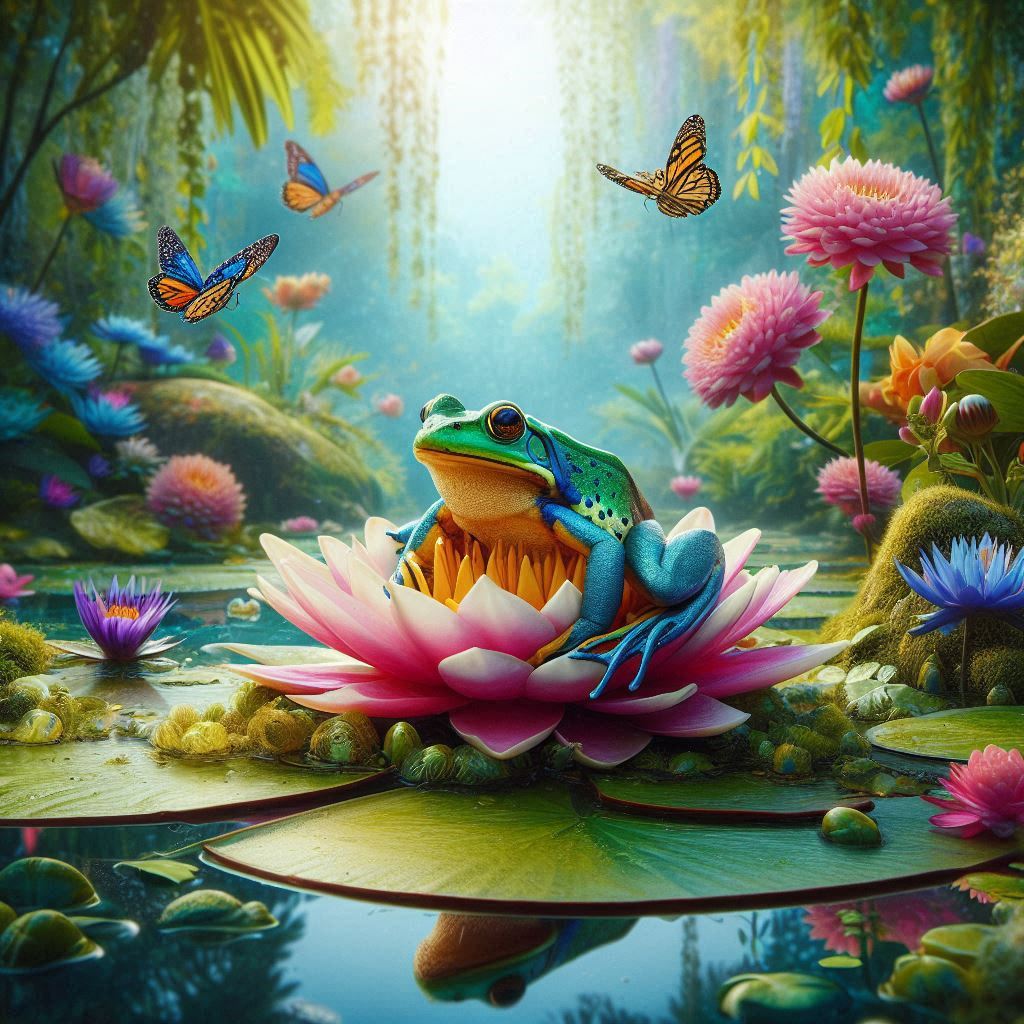African Clawed Frog: An Amazing Aquatic Creature
General Overview
The African Clawed Frog is a fascinating amphibian that spends its entire life in the water. Known for its clawed toes and smooth skin, this frog has unique habits and abilities that make it stand out among amphibians. It’s found in sub-Saharan Africa and has even become famous worldwide for its use in scientific research.
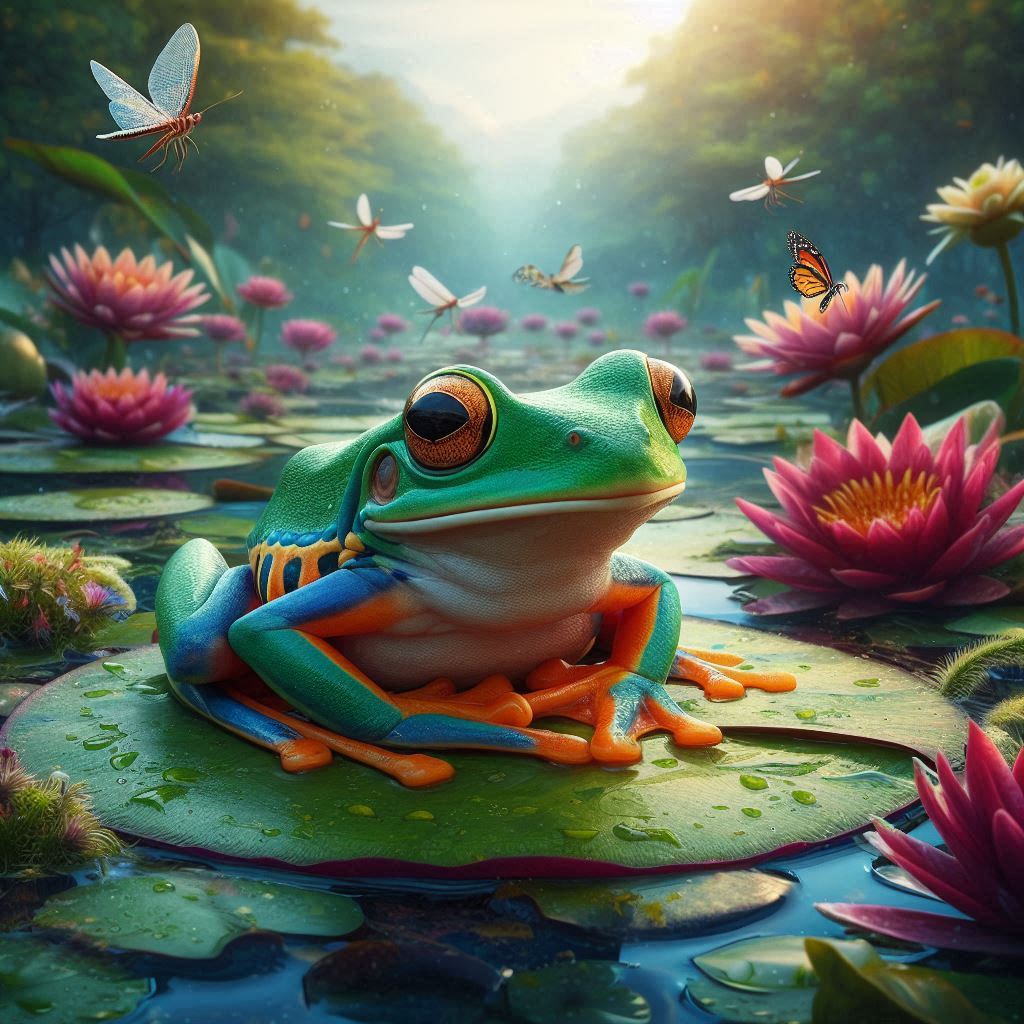
Classification
- Scientific Name: Xenopus laevis
- Family: Pipidae
- Order: Anura (frogs and toads)
- Conservation Status: Least Concern (IUCN)
Physical Characteristics
- Size: Females are larger than males, growing up to 4–5 inches (10–12 cm) long, while males are about 2–3 inches (5–8 cm).
- Color:
- Grayish-green back with dark spots for camouflage.
- Pale or white underside.
- Limbs:
- Hind legs are long, strong, and equipped with sharp black claws for digging and defense.
- Front legs are small and delicate, used to push food into their mouth.
- Eyes: Located on top of the head, perfect for spotting predators while staying mostly submerged.
- Skin: Smooth and slippery, with no scales.
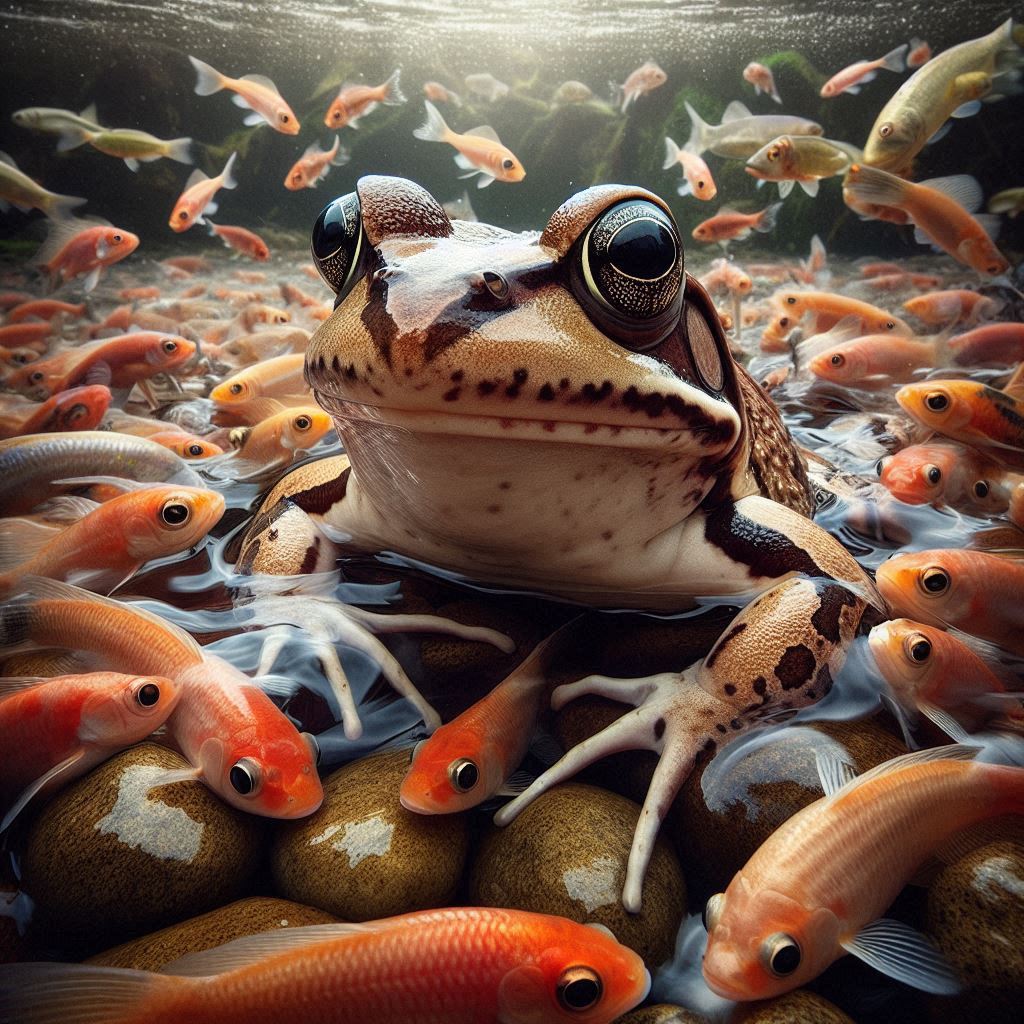
Habitat
- Native Region: Sub-Saharan Africa.
- Preferred Environments:
- Warm, still, or slow-moving freshwater like ponds, rivers, and marshes.
- Muddy or vegetated areas where they can hide from predators.
- They can survive in low-oxygen waters by absorbing oxygen through their skin.
Diet
- Carnivorous: These frogs are scavengers and opportunistic eaters.
- They feed on:
- Insects.
- Small fish.
- Worms.
- Tadpoles.
- Organic matter like decaying plants or animals.
- They use their sensitive fingers and vacuum-like mouths to detect and eat food.
Behavior
- Fully Aquatic: They spend their entire lives in water and rarely venture onto land.
- Nocturnal: Most active at night, but they may also feed during the day.
- Survival Skills:
- When water sources dry up, they burrow into the mud and enter a hibernation-like state called estivation until conditions improve.
- Use their claws to protect themselves from predators.
Reproduction
- Breeding Season: Happens during the rainy season when water levels rise.
- Eggs: Females can lay up to 1,000 eggs at a time, attaching them to plants or rocks.
- Development:
- Eggs hatch in 2–3 days.
- Tadpoles grow into adult frogs within 6–8 weeks.
- Males call to attract females using a series of clicking sounds.

Conservation Status
- IUCN Status: Least Concern.
- Threats: While populations are stable, habitat loss, pollution, and invasive predators pose challenges.
Fun Facts About African Clawed Frogs!
- Super Swimmers: Their webbed feet make them excellent swimmers.
- Clawed Toes: They use their claws to tear apart food and dig into the mud.
- No Tongue or Vocal Cords: Unlike most frogs, they don’t have a tongue or croak. Instead, they make clicking sounds underwater.
- Science Heroes: These frogs were once used in pregnancy tests! Scientists injected women’s urine into the frog, and if it laid eggs, the woman was pregnant.
- Regeneration Powers: They can regrow injured or lost body parts, making them popular in medical research.
- Global Travelers: African clawed frogs have spread to other countries and are now considered invasive species in some areas.
More About African Clawed Frogs
African clawed frogs are fascinating for their survival skills, unique biology, and importance in research. Whether you’re watching them in the wild or in an aquarium, they’re truly one-of-a-kind amphibians!
Would you like to explore more amazing animals? Let me know! 😊


